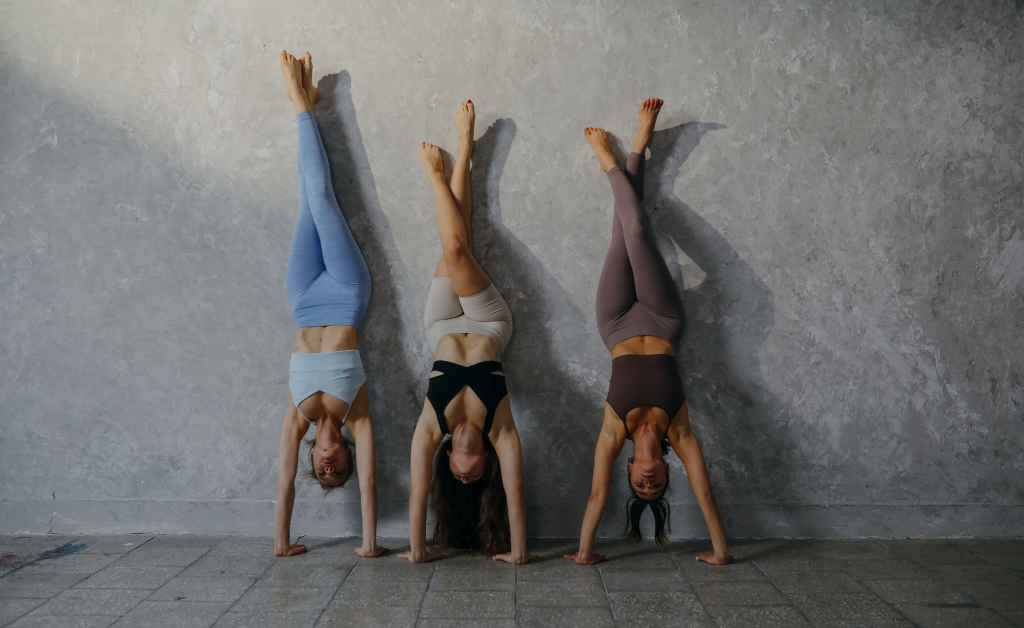College athletes have high demands of activity in their lives. Between balancing practice, games, school, and social life, an athlete can feel very overwhelmed. Athletes need optimal mental and physical recovery so they can perform at a higher level while avoiding injury. Yoga plays an important role in optimizing performance for college athletes.
Even professional athletes are starting to take advantage of yoga. Yoga expert Dana Santas, who is known as the “mobility maker” works with professional athletes in the NHL, NBA, NFL, MLB, WWE, PGA.
It really makes a huge impact, it’s a massive game-changer,” Santas said. “How they perform really comes down to how well they move and control their bodies.”
History of yoga
Yoga is thought to originate from an ancient Indian Civilization and has been practiced for over 5,000 years. It brings unity to the mind, body, and soul, and connects the body to breathe. Yoga is not specific to any religion or belief system, so it truly is for everyone. There are several different types of yoga. Some classes are designed for restorative purposes while others are geared towards providing a great workout.
Dr. Ishwar Basavaraddi gives a great description of the types of yoga. Nonetheless, all forms of yoga will provide a benefit to everyone.
“Yoga is essentially a spiritual discipline based on an extremely subtle science, which focuses on bringing harmony between mind and body. It is an art and science of healthy living. The word ‘Yoga’ is derived from the Sanskrit root ‘Yuj’, meaning ‘to join’ or ‘to yoke’ or ‘to unite’.”
Dr. Ishwar Basavaraddi
Why yoga for college athletes?
Yoga is linked with improving mental health, having positive effects on lab values, and improving athletic performance. There are some stigmas that yoga is only for girls, it isn’t challenging enough, or that it wouldn’t provide benefits.
Yoga is definitely for everyone though! South Dakota State University wide receiver Deyon Campbell did yoga because he wanted to improve his flexibility and prevent injuries.
I asked Deyon how difficult it was being a division 1 football player. He said, “Yoga was harder than he expected, but he loved the challenge and benefits he received.”
Here are five reasons why all college athletes will benefit from yoga.
5 benefits of yoga for college athletes
Increase flexibility
Increasing flexibility will improve an athlete’s range of motion (ROM), relax muscles, and reduce the risk of injury. A main component of yoga is achieving a deep stretch in challenging poses, which will lead to improved flexibility. A few months before I started yoga, I had a shoulder repair that caused limited ROM due to inactivity after surgery. Yoga significantly helped me improve my mobility, allowing me to increase my ROM and improve exercise performance.
Better balance
Balance is an essential component of several sports. A 10-week study found that athletes that participated in yoga in addition to their training had a significant improvement in balance. Deyon noticed his balance improving with each yoga session he participated in. Having balance throughout a greater ROM and maintaining body control will help athletes with all aspects of their sport.
Optimize recovery
Recovery is one of the most important parts of improving performance, especially at the college level. Yoga enables athletes to relax their mind ad focus on the mind-muscle connection while doing deep stretching poses. Focusing on muscle recovery will help athletes build strength, decrease the risk of injury, and decrease muscle tightness.
Stress management
Stress can present itself in several ways that will affect the performance of college athletes. Clarity in stressful situations is vital so athletes can make quick decisions and prevent injury.
First off, stress can cause muscle tension which leads to poor coordination and an increased risk of injury. Yoga therapist Kylie Serie discovered that I carry stress in my neck and left shoulder. My left shoulder is a troubled area, so I was not surprised. Since her assessment, I made it a priority to release tension before lifts to avoid re-injury.
Next, stress can cause a lack of focus, causing athletes to be less aware of themselves and their surroundings. This decreases attentiveness to threats such as opponents, obstacles, and body mechanics during technical lifts.
In a study exploring the physiological effects of yoga on stress in college students, it was concluded that yoga was effective for relaxation, body awareness, mental quiet, decreasing worry and stress, and improving mental performance.
Improve mindfulness
College athletes that feel anxious or stressed before a competition will find power in learning breathing techniques from yoga. Yoga is a form of meditation in which participants focus on breathing deeply through their nose, feeling the air fill the belly, and exhaling through the mouth. Deep belly breathing stimulates the vagus nerve and activates the parasympathetic nervous system. This causes the body to relax by decreasing heart rate, blood pressure and reducing stress. When holding difficult poses, instructors will guide participants to focus on breathing, leading them to find comfort in the uncomfortable.
Deyon was able to become very calm with belly breathing during his yoga sessions and said it will be a useful strategy for him during stressful games. When athletes learn how to manipulate their breaths to calm themselves, they can perform better during stressful situations. This will make them better athletes overall.
Beginner yoga flow for college athletes
One of my favorite yoga channels on Youtube is Yoga with Adriene. Adriene is very easy to follow because she talks slow and concise and explains each pose very well. She practices at a pace that is very doable for beginners.
Conclusion
All athletes can benefit from yoga, whether it is improving performance or learning techniques to perform under pressure. If you thought this article was beneficial, share with athletes to hopefully inspire them to give yoga a try, and reap the benefits.
And if you think you are too cool to do yoga, remember that Tom Brady does yoga on the sidelines of his football games. Considering he is 43 years old and close to playing in Super Bowl LV in front of 22,000 fans amidst a pandemic, we might want to take notes.
For more recovery tips, check out 5 reasons you should stretch more on Sports and Fitness Digest.




